- Camping
- Dec-Mar
- Easy Grade Treks in Himalayas
- Easy Snow Treks
- Fall Treks
- Family Friendly
- Garhwal Treks
- Mar-Apr
- May-Jun
- One Week Trek
- Short Trek
- Spring Treks
- Summer Treks
- Uttarakhand
- Winter Treks
Har Ki Dun Trek:
- Private/customised treks for your own group/family is open from 2nd may , 17th may , 13th june 1st, SEP to OCT 30 every saturday , sunday and 2nd oct. is fixed departure .
- There will be 2nd OCT fixed Group departure trek to Har Ki Dun in autumn/summer.
About the trek:
Har Ki Dun trek is probably the finest river valley trail in India, and never lost its charm to trekkers around the globe. There are many reasons for stating so, though the beauty of the valley in itself is the primary attraction. Change of colours in each season makes this route a year around choice for nature lovers.

Gentle hike through this wide fertile valley, remote villages enroute, culture and hospitality of the people you can’t miss. It is indeed a lovely walk to the Har Ki Dun valley with fascinating views of Jaundhar glacier and surrounding Swargarohini group of peaks. The views of Swargarohini group, Bandarpunch range and Black peak (Kalanag) are pretty descent to mention modestly. The walk culminates to a glacier carved spectacular valley, as if an amphitheatre ringed up by high spurs of rocky mountains. The sunrise and sunset at Har Ki Dun needs special mention.

Early snow during November and ample amount of residual snow during spring makes this trek a compelling choice. Further exploration towards Marinda Tal/Jaundar glacier will surely ignite the adrenaline in your adventurous mind.
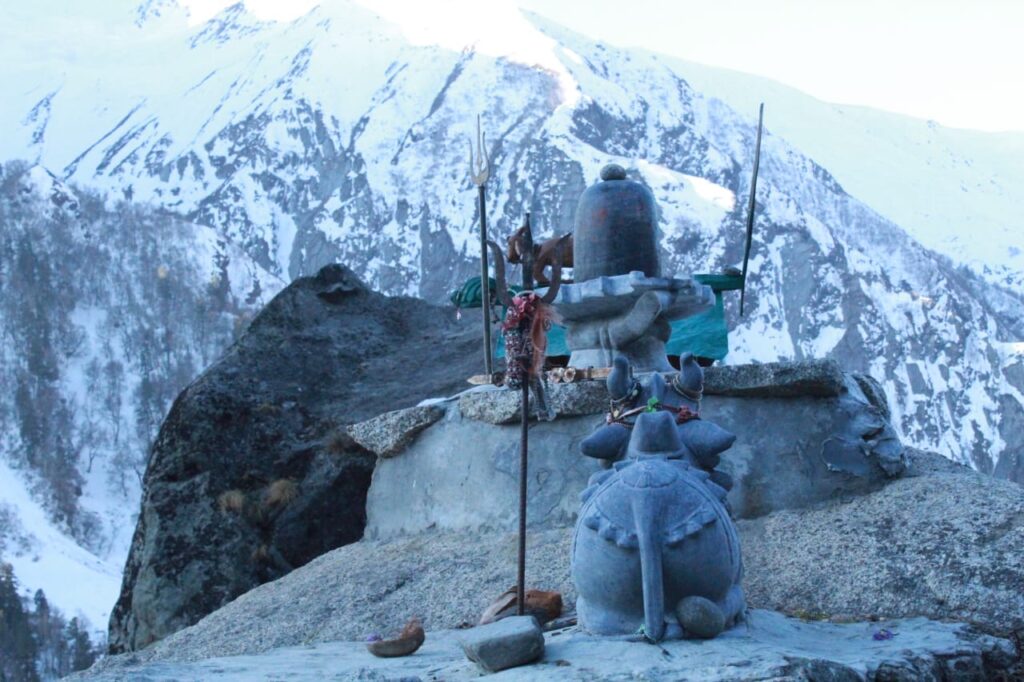
Due to the above facts, this trail is a must to visit for experienced hikers. The easy trail with gentle gradient makes it comfortable to beginners. No wonder that coupled with these two factors it is one of the most popular trek in Indian Himalayas.
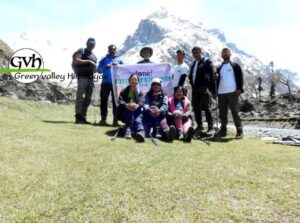
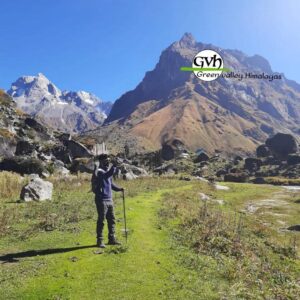
Brief Itinerary:
Day 1: Dehradun to Sankri – 200 Km by car – 9/10 hours. Lodge
Day 2: Sankri to Taluka – 11 Km by car – 1 hour – Trek from Taluka to Chilurgad via Gangar – 10 Km – 5 hours. Camp
Day 3: Trek to Simatra via Osla/Seema – 11 Km – 6 hours. Camp
Day 4: Trek to Har Ki Dun, Exploration around Har Ki Dun and return to Simatra – 12 Km – 7/8 hours. Camp
Day 5: Trek down to Chilurgad via Osla village – 5/6 hours. Camp
Day 6: Trek to Taluka – 10 Km – 4 hours, by car Sankri – 1 hour. Lodge.
Day 7: Drive to Dehradun – 200 Km – 9/10 hours.
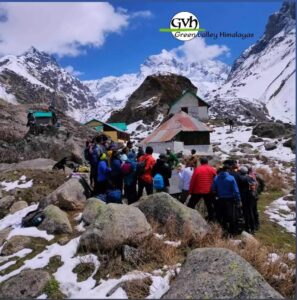
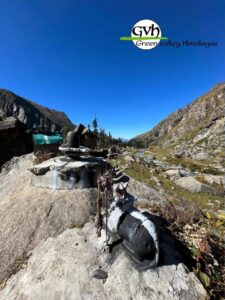
Important Note:
- You need to reach on your own to Dehradun on Day 1 morning (latest by 7 am) or the previous night. Return to Dehradun on Day 7 evening (by 7 pm). Arrange your tickets for inward journey and return from Dehradun accordingly. We will arrange transport to reach Sankri and return which is included in the TREK FEE.
- Last ATM is at Mori, 25 Km before Sankri but don’t depend till you reach here. Withdraw cash well in advance either in Dehradun, Naugaon or Purola.
- Only BSNL and Vodafone network may work at trek base Sankri, that too very limited connections. Make a phone call back to home from Mori while reaching Sankri. After Sankri there is no presence of network.
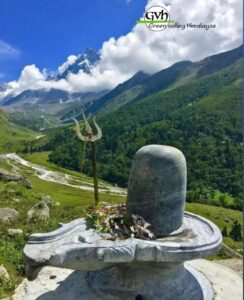

Location:
Har Ki Dun valley is on the far western flank of Garhwal in Uttarkashi district (Purola subdivision), Uttarakhand. The trek route lies entirely within the buffer and core region of Govind Pashu Vihar National Park. This catchment area is a major source of Yamuna through its largest tributary Tons river. To note, Har Ki Dun and Ruinsara Nallah form meandering Tamosa river, near Osla village. Tamosa flowing beside Taluka and below the village Sankri unites with Supin near Jakhol. Supin and Rupin combined at Netwar forms the Tons river.

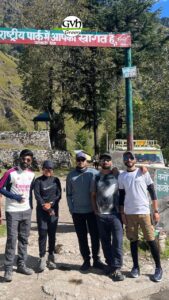
Camping ban at Har Ki Dun (Updated March 2019)
As per Uttarakhand High Court order ( Petition No. : 123/2014 ) , one can not camp on alpine and sub-alpine meadows/grasslands, locally called “Bugyal. Therefore forest department has revoked the permit to camp at Har Ki Dun effective from September’18. Starting from Oct’18, our highest camp is at Simatra after climbing Kalkatti Dhar. From Simatra we visit Har Ki Dun and return to camp for a day trip.

Best time to choose Har Ki Dun trek?
Har Ki Dun trail is truly an year around trek, apart from monsoon season of July/August when it not convenient to trek. Every season has something to offer, which is special on its own.
Note: As of 2019, Forest department is not issuing permit on this trail from December to February. Starting from December 2016, this is enforced considering the corridor of winter migration for wildlife overlapping the trail. At present no permit is given for winter Har Ki Dun trek from December to February.
As said above, this trek is still pretty beautiful in all the permitted seasons. If you are looking for snow, Spring (March/April) is ideal. Amount of residual snow depends on the actual snowfall during winter months though you can be sure to get some or ample amount of residual snow in spring. See more pictures of snow in 2019 update at the bottom of the page.
From May onward during the summer time, the valley turns into green, bright and luminous. Blue Pine, Deodar (Himalayan Cedar), Kharsu (Oak), Spruce, Silver Fir and Birch trees are lush and glossy green. Due to the heat glaciers melt faster and pour more water to the tributaries on Tons river. Day time temperatures are warm to pleasant and nights are cooler. If you don’t like cold atmosphere, certainly this is the season to choose.
After monsoon is over by end of August, the valley remains lush green throughout September. As the fall approaches, slowly the grass turns into pale yellow. Maple, Chestnut, Walnut and other deciduous tree species take the autumn leaf foliage. The surrounding transformed into spectacular yellow, orange and bronze hue. Not only foliage but an early snow fall chance during late autumn is another basis that you choose this season.
As you see, it is up to you to choose the best suitable time to trek in this beautiful valley. Its a beautiful route all around the year.
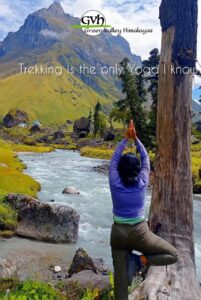
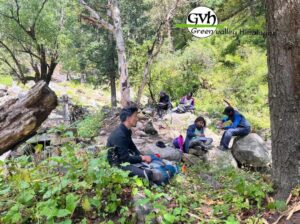
Interior villages, native people and culture during Har Ki Dun trek:
In recent days it is not common on Himalayas that you need to walk a full day to reach the last village on a trail from nearest motorable road. The trail starting from Taluka village extends the opportunity to see interior villages like Gangad, Powani and finally Osla. Neatly wooden crafted houses and dress of the local people resemble the neighbouring Kinnauri culture of Himachal Pradesh. Parents who are keen to initiate hiking and outdoor experience to kids on the Himalayas, this route is indeed a chart topper. If you are more keen on this type of interaction.
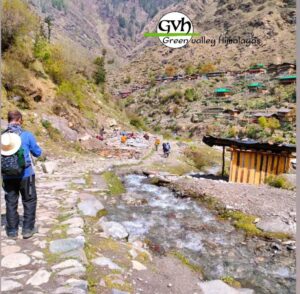
Osla temple and legends of Pandavas:
Starting in the 1980s some books/reports referred to the temple at Osla village as the “Duryodhana” temple. Even to date on most websites, it is portrayed that Mahabharata character Duryodhana is worshipped here. The proposition is indeed interesting but this may not be the case. This is a Someshwar temple and an adoration of Lord Shiva. To date, a festival along with a two week-long Mela (a village fair) is organised during monsoon in the month of Sawan worshipping the idol/Doli. The Doli moves from one village to another, seasonally.

Also, few websites point to the trail as the legendary path taken by the Pandavas to heaven. Swargarohini peaks don’t have any connection to the Swargarohini glacier, a.k.a Satopanth Swargarohini trek route which starts from Badrinath and is far away from this region.
Har Ki Dun trek temperature & clothing you need:
Summer (May/June): Daytime weather remains warm, especially if it is sunny and scorching and can go as high as 25/30°C. Night/early morning temp at Har Ki Dun can be around 10°C to 5°C.
Fall/Autumn (Oct/Nov) or Spring (Mar/Apr): From October temperature starts cooling down. At Har Ki Dun temperature can plummet to freezing in the night/early morning. Be prepared for 0°C. Expect similar temperatures if you trek during spring.
Winter (Dec/Feb): In Dec the daytime temp remains cool and nights are cold. Night temp at Sankri, Seema and Har Ki Dun can be around 2°, -2° and -5°/-10° C.
You need to be careful while selecting the proper clothing for this trek. Three layers of clothing is highly recommended.
a) A base layer – preferably a quick-dry t-shirt.
b) Mid layer – a warm jacket (Double layer or Fleece jacket ).
c) Outer layer – A windproof cum waterproof.

Access to Har Ki Dun trek base (Sankri):
We will arrange a pickup from Dehradun railway station to Sankri and back. This will be shared by the team members on an actual basis and paid directly to the driver. You pay directly to the driver/owner. The fare is ₹ 5500 for a Tata Sumo/Mahindra Maxx one way. This can accommodate 6 to 8 people. A Tempo Traveller charges ₹ 9000 (12-13 seats) one way. Comes around ₹ 1500- 2000 per person both ways for the pickup and drop when shared with fellow trekkers, payable directly to the driver. This is NOT included in TREK FEE.
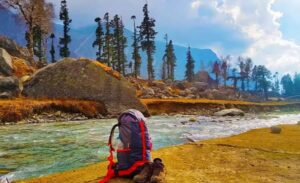
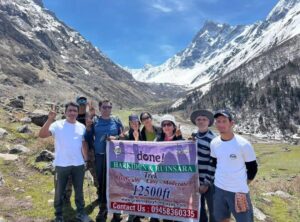
To reach the trek base Sankri independently or on public transportation, check the details in GETTING THERE TAB.
Updates from Har Ki Dun trek Spring/Summer, March to May 2019:
Finally, spring has arrived in the mountains. As you may know by this time, last winter was harsh, accompanied by consistent snowfall. This area is the westernmost part of Uttarakhand, bordering Himachal, and receives more snowfall than other similar routes. Frequent snowfall took place as late as the beginning of March. We hope that the trail will open by mid April, after some snow slogging and you will get residual snow at Har Ki Dun, as late as May.
Available Dates:
Duration: 5 days of trek; Walking to Har Ki Dun, exploration and return. Dehradun to Dehradun in 7 days.
Prerequisite: Ideal first Himalayan trek with basic physical fitness.
Grade: Easy
Physicality: 5.5/10
Trail Length: 50 Km
Highest Point: Har Ki Dun valley ~ 3500 m/11500 ft.
Seasons: March to June (snow) and September to November.
Further Option: Continue to further north and cross Borasu Pass to reach Chitkul on Baspa valley in Kinnaur. (Difficult grade trek). Explore Jaundhar glacier (2 days side trip)
Access: Trek starting point and end point is Sankri.
Rail station: Dehradun (STN Code: DDN)
Airport: Delhi; Jolly Grant in Dehradun (Airport Code: DED)
Upcoming scheduled dates for Har Ki Dun trek:
- You can check the scheduled Fixed Departure dates in the calendar available inside Booking Form or inside REGISTER NOW form. Tour starting Dates are highlighted as per our itinerary (Day 1 of 7 days itinerary).
- At present BOOK NOW functionality is disabled. You can get all the information in your email by submitting the REGISTER NOW form.
- If you are a group of people and available dates are not matching then you may select Custom date mode (by clicking the Select your custom date) and fill in the displayed form.
- You can also check all the available dates at a glance in our TREK CALENDAR.
- Trekkers need to reach Dehradun on Day 1 morning (latest by 8 am) or the previous night. Return to Dehradun on Day 7 evening by 7 pm. Arrange your tickets for inward journey and return accordingly.
| DEPARTURE LOCATION | Dehradun railway station |
| REPORTING TIME | 7:00 AM for a prompt departure to Sankri (Day 1) |
| RETURN LOCATION | Dehradun |
| RETURN TIME | Approximately 7:00 PM (Day 7) |
How to reach Sankri (The trek base):
Nearest Rail station: Dehradun (Station Code: DDN)
Nearest Airport: Delhi, Jolly Grant in Dehradun (Airport Code: DED)
Based upon your request we will arrange a pick up and drop from Dehradun to Sankri and back. This will be shared equally by the team members on actual basis. You pay directly to the driver/transporter. The fare is Rs 5500 for a Tata Sumo/Mahindra Maxx one way. This can accommodate 6 to 8 people. A Tempo Traveller charges Rs 9000 (12-14 seat) one way. This is NOT included in TREK FEE and to be paid directly to the driver/owner.
If you wish to reach our Trek Base Sankri on your own by public transportation:
- There are 2/3 privately operated buses from Dehradun (near DDN railway station on Gandhi road) To Sankri. The 200 Km journey will take around 10/12 hours. The busses start at 5:30/6/7 am.
- While returning from Sankri take the morning bus to Dehradun/Vikasnagar and reach by 7 pm.
How to reach Dehradun:
For the treks at Uttarkashi district in Garhwal , one has to reach the capital city of Uttarakhand, Dehradun, specially the trek starting from Sankri, Yamunotri etc. Haridwar, Rishikesh and Dehradun are 3 nearby cities in the area and one can move from one to another by public vehicles like bus or shared Jeeps.
Haridwar to Dehradun: 55 Km and may take one and half to 2 hours.
Dehradun to Rishikesh: 45 Km and may take around one and a half hour.
You can fly or by train reach New Delhi as per your convenience from any part within India.
There are direct trains from Kolkata to Dehradun.
KUMBHA EXPRESS – Train No. – 12369 ( Very good option to reach Haridwar by 5 pm; You can take a bus from the terminus just opposite to the railway station referred as Roadways bus stand/ISBT and reach Dehradun in one and half hour. Spend the night in Dehradun and start your onward journey by car next morning.)
UPASANA EXPRESS – Train No. – 12327 ( Very good option to reach Dehradun directly by 5 pm; Spend the night in Haridwar and start your onward journey by car next morning)
DOON EXPRESS – Train No. – 13009 (Don’t book this train when you plan a long onward journey immediately in the morning)]
Avoid booking wait listed (WL) tickets in AC classes (1A/2A/3A) or Chair Car (CC). Book Sleeper class (SL)/Second Sitting class (2S) tickets which have normally more seats/berths and hence much better chance to get confirmed.
You can reach Dehradun easily from New Delhi by train or bus (~ 6/7 hours) and is around 260 Km.
By train:
Following trains are good to reach Haridwar and run daily.
DDN JANSHTBDI – Train No. 12055 (Arrives DDN in the evening @ 9:10 pm, good choice when you stay the night in Dehradun and have a long drive ahead next day)
NANDA DEVI EXP – Train No. 12205 (arrives DDN early morning @ 5:40 am)
Always avoid booking waitlisted (WL) tickets in AC classes (1A/2A/3A) or Chair Car (CC). Book Sleeper class (SL)/Second Sitting class (2S) tickets which have normally more seats/berth and hence much better chance to get confirmed.
By bus:
Govt. Road Transport (Roadways of Uttarakhand, Uttar Pradesh, Delhi, Haryana, Punjab etc.) buses are frequently available in day time and night from Kashmiri Gate ISBT (http://www.delhi.gov.in/wps/wcm/connect/doit_transport/Transport/Home/ISBT/Fare+Chart). Tickets are available on board for these regular type buses. From Delhi Airport or Station you can reach ISBT Kashmiri Gate via Delhi Metro service (http://www.delhimetrorail.com/metro-fares.aspx). It is only 4 Km from NDLS and can be reached easily by booking an auto rickshaw.
For privately operated bus, you can book online from different portals. Select a boarding point suitably. Overnight Volvo/A.C/Push back buses are available. Normally these buses take up to 7 hours to reach Dehradun ISBT. You can book an auto rickshaw for Railway Station (5 Km away)/Hotel Drona (GMVN) or take a shared auto (Route No. 5) from ISBT.
[There are two major bus terminus in Dehradun. The buses from Delhi/Haridwar goes to the ISBT (Inter State Bus Terminus) and the other one is the Parvatiya Depot (Hill Depot, from where you can get the buses going up the hills like Uttarkashi, Barkot, Purola etc) located just beside the Railway station.
Nearest Airport Jolly Grant is 25 Km away from Dehradun. book a private taxi to reach Dehradun city. This airport is accessed from Dehradun, Haridwar and Rishikesh easily. The flights are mostly via Delhi.
For night stay in Dehradun:
Trekkers reaching on the previous day before the journey to the actual trek base need to stay the night in Dehradun. There are several options in Dehradun for spending a night while staying in Premium, Standard or Budget accommodation. Options vary from Privately operated Hotels/Lodges, to state run Tourist Rest Houses.
State run GMVN (Garhwal Mandal Vikas Nigam) operates Hotel Drona complex is 10 minutes walking from the railway Station. You can book an auto rickshaw. From ISBT it is around 5 Km. You can book an auto rickshaw to Hotel Drona (GMVN) or take a shared auto (Route No. 5) from ISBT (Inter State Bus Terminus). This is a reliable and a decent choice for Standard accommodation. The have restaurant and room service.
Check the following for online booking of the above: http://www.gmvnl.com/newgmvn/tour/booktrh.asp
You can call or visit GMVN nearest office or even send an email for more information.The information is available at:
http://www.gmvnl.com/newgmvn/online_reservation/#
Return from Dehradun:
Normally you reach Dehradun from any trek base by 6/7 pm in the evening. You can take any train after 9 pm or regular bus service as mentioned above to reach Delhi or directly to your homeward journey in the same night.
Drive to Sankri: 200 Km – 10/11 hours
Pickup in the morning from Dehradun and reach Sankri (~ 1900 m, 6230 ft) . Distance around 200 Km and can take 9/10 hours. The road is one of the most scenic in Garhwal region while we go up to the classy hill station of Mussoorie at the beginning, turquoise Yamuna river in the middle and conifer forests of blue pine and meandering Tons river at the later half of the journey. The major points are Mussorie, Yamuna Pool, Damta, Nawgaon, Purola, Mori and Netwar. Mori is the last place from where you can get a confirmed mobile phone network and also has a SBI ATM. Though Sankri has a BSNL tower but network doesn’t remain most of the time! After crossing Netwar we reach the check post of Govind Vanya Jibh Vihar (Govind National Park) from where the permits need to be obtained. Sankri has few private lodges and a GMVN operated Tourist Rest House (TRH) and couple of basic restaurant to serve food. Night stay in lodge/homestay.
Drive to Taluka: 1 hour; Trek to Seema: 14 Km – 6/7 hours
Wake up early in the morning to see the first sun light on Sankri. It is a small stretch of Bazaar and the adjacent village. After breakfast we prepare to start our trek. There is a motor able Kaccha road from Sankri to Taluka heading up the valley. The bumpy 11 Km ride takes around 45 minutes to reach Taluka (~2100 m/6900 ft). Our walk starts from Taluka. The camping ground is adjacent to the Forest Rest House. There is a small tea shop at the end of the road and 2/3 very small provision stores. We directly take the stony stair cases to get down almost to the river bed and start walking along the Tamosa river, keeping it on our left (“True Left” of the river). It is an easy gently walk gradually moving up the valley. Snow is encountered at patches where sun doesn’t get a chance to enter for longer duration. After walking for an hour we cross a side stream and move on to an flat opening on the left hand of the trail. Local people are seen in an interval with heavy loads on their back aiming to stock provisions for long winters. There are few villages in this valley like Datmir, Gangar, Powani and Osla, the last one being the farthest. Walking along the valley in the shades of conifer and occasional snow patches for 9 Km, we reach a side stream and cross the bridge to get on the main valley again. This place has also a bridge on the Tamosa river and the Village named “Gangar” is mostly on the other side of the river. From here we continue our gradual walk for another hour to reach an opening with a new concrete construction for a proposed school. A bridge on Tamosa is built here to reach the village of Osla. We keep our track while the river is on our left and walk another hour inside a sun shed thick forest to reach Seema (~2500 m, 8200 ft). The last stretch remains snowy in winter and avoid slush. One GMVN TRH and a Forest Rest House along with a solitary private Dhaba (Opens from Jun till Oct) to serve food. Prior booking of the any of these is highly recommended for trekkers who don’t have camping setup. Camping ground is also nearby. Seema is not a village but only a tourist shelter point. The village Osla is on the other side of the river, almost ~ 215 m/700 ft above the river bed. Total distance is 14 Km and may take 6/7 hours. We camp for the night.
Trek to Har Ki Dun: 11 Km – 5/6 hours
We start in the morning on the stoned trail and reach the suspension bridge at Seema. The trail straight ahead goes to Ruinsara Tal and further to Bali Pass or Dhumdharkandi Pass. Cross the Tamosa river and climb up to reach the trail which is going along the river upstream. From now onward the river will be on our right (“True Right” of the river) and we gradually go up to reach a vast green expanse which is a huge clearing for farming by the people of Osla. From here the peaks facing north and north east opens up and the views of Banderpunch group and Swargarohini group are breathtaking along with Black Peak (Kalanag). We gradually skirt the mountain for another hour to reach the base of the steady climb to Kalkatti Dhar. From here we can see the Ruinsara valley takes a right turn , while we take a left turn. Har Ki Dun Nallah and Ruinsara Nallah meets below Kalkatti Dhar to form Tamosa river. It is normally windy while we climb to Kalkatti Dhar. After reaching the the highest point on the shoulder of the mountain we turn left and gradually go down. First time after Seema we again enter into the forest and descend steadily to a side stream. In winter the waterfall remains frozen. This is a good place to have lunch. From here we gradually climb in to a forest canopy of Silver Fir , Cedar and Oak. Crossing the forest we enter in to the wider valley with occasional Birch ( Bhurja Patra in Hindi) and Rhododendrons. The valley is teemed with bird life. Buntings, Flycatchers and Mountain Fiches are abundant. Himalayan Langur and Blue Sheep are common in this valley. There are reported sightings of elusive Snow Leopard in this region. Now the river bed is almost at the same level and Har Ki Dun valley approaches. The camping ground is near the river and several tents can be pitched. Walk another 10 mins to cross the Har Ki Dun Nallah over a small wooden bridge. Forest Rest house (FRH) is a minutes walk from here. GMVN TRH is another 10 mins ahead. It is mandatory in winter to book in advance for any of these huts. Caretaker only comes along with the keys for a prior booking. During summer food is available in GMVN TRH. There are two rooms at FRH and one dormitory at GMVN which can be booked. It is better to come with own tent and provisions in season to avoid any hassle. Total distance is 11 Km and may take 5/6 hours. Average height of the valley is ~ 3500 m/11500 ft. Camp for the night.
Exploration Day towards Marinda Tal or Jamdar Glacier: 8/10 Km – 4/5 hours
Wake up early in the morning to see the sunrise on Swargarohini group of peaks. Changing colour is magnificent to watch and unforgettable. The Forest Rest House (FRH) is located some what centrally in this vast expanse of the valley. Heading straight from FRH is Har Ki Dun peak. On the right towering Swargarohini and to the left is Hata peak. Two streams are coming from two different directions, one from Jaundar glacier and other from Borasu pass watershed to Har Ki Dun and forming the Har Ki Dun Nallah. Har Ki Dun is a big enough valley sitting in the middle with forking of trails in different directions. Treeline recedes here in all directions. Today is an exploration day amidst snow or simply one can sit back at the campsite and relax while sipping a cup of coffee. After breakfast one can either go to explore the Jaundar glacier or to Maninda Tal area, which are on different directions. The snout of Janudar glacier is 8 Km from Har Ki Dun. The trail is not defined and on snow, boulder and moraine, involving descent and ascent. It is pretty difficult to reach the snout of the glacier and return to the campsite in a single push. A camping is required in between. It is advisable to venture and advance in this direction only till noon and retrace back by 3 pm. On the other hand, Maninda Tal is about 2 hours walk from Har Ki Dun and is in the route towards Borasu Pass trail which connects this valley to Baspa valley in Kinnaur, Himachal Pradesh. The area is a shallow formation of clogged water resulting from a flattened bed of the stream. The valley heading upward looks splendid from here. Lammergeier and Himalayan Griffons encircle the valley surrounded by rocky cliffs. Pug marks of Snow Leopard following a flock of Bharal (Blue Sheep) is common. Return to Har Ki Dun by lunch time and take the hot lunch prepared freshly. From the FRH cross the wooden bridge on the Har Ki Dun Nallah walk toward the camping ground in the afternoon. Kedarkanta peak is clearly visible and the highest point in this direction. Sunset is mesmerising , reflecting the last rays of sun on Har Ki Dun Nallah and peak. Changing golden hue makes any trekker a spellbound spectator. It is a good idea to collect firewood to setup a fire in the night. This is already a fragile ecosystem, so ONLY collect branches and twigs which are already fallen from the trees. The FRH has a fireplace inside. Nights are pretty cold here and the temperature can plummet to -10 deg C outside the night in winters. Night stay in tent.
Trek to Osla/Seema: 11 Km – 5 hours
Today after breakfast we start our return journey toward Seema. It is a gentle descent along downstream till we reach the waterfall which remains frozen in winter. From here we climb up to Kalkatti Dhar and descend gradually to the vast crop field. Approaching the Seema bridge, we take the trail straight heading toward the village Osla, instead of directly going down to Seema. It is a memorable experience to visit a village like Osla, nestled on the lap of mountain. The houses are mostly build of wooden structure with slate as the roof. Houses are two storied, lower being the cattle shelter and firewood/fodder store, upper being the residence of the family. Though few satellite TV dishes are present on top of few houses but the village lacks very basic facilities. A satellite phone is available to connect to the outer world. One can make a phone call to home by paying nominal charge, if a connection is available. The village is spread along the slope of the mountain and a temple is the heart of the village. Wood crafted temple is more than a century old. It is a legend that Duryodhan, the eldest brother of the Kauravas is worshipped in this temple. The deity of the temple resides at different temples of the villages of this valley, turn by turn. The rule being same across the Himalaya, summer is higher, and winter is lower. It is a chance to meet local children and people, knowing their livelihood, custom and culture, social structure. It is worthwhile to spend some time with joyful kids in the village. After spending some time in the village we take the trail down toward the Seema bridge and by crossing the suspension bridge we reach Seema. Night accommodation in tent.
Trek to Taluka: 14 Km – 6/7 hours; Drive to Sankri: 1 hour
We retrace our trail back to Taluka. From here take the car to reach the trek end point Sankri. Night stay in lodge/homestay.
Drive to Dehradun: 200 Km – 10 hours
In the morning we start our return journey and reach Dehradun by 7 pm. Trip ends here.
P.S.: Distances and altitudes are approximate and may not be exact.
TREK FEE: ₹ 10450 (Sankri to Sankri) + 5% GST
Book for 5 persons or more and get flat 10% Group Discount on TREK FEE
Inclusions:
2 night’s accommodation at Sankri (Day 1 & Day 6) in lodge on twin sharing basis and dinner. Men and women will be given separate rooms in Fixed Departures.
Car drop from Sankri to Taluka (trek starting point) and return.
All meals during the trek (Day 1 dinner to Day 6 dinner). Regular Indian style nutritious vegetarian food during the trek (including occasional eggs), breakfast packed/hot lunch (depending upon the time you reach a campsite), snacks, dinner along with coffee/tea/soup.
Excellent Trekking Guide, who will be a local to this particular area and has profound knowledge of the trekking trails around.
Specialised Cook, Support staff, Porters/Packed Animals for carrying the central logistics of the trek.
Stay in tents on twin sharing basis during the trek.
Camping equipment like Sleeping bag, Carry mattress, Gaiters, Micro spikes/Crampon. (Bring your own sleeping if you have a high altitude specific personal Sleeping Bag. This is always better for hygienic reasons.)
Kitchen tent, dinning tent and toilet tent as required during the trek.
All permit fee, camping charges, forest levy required for the trek.
Basic Medical & First Aid kit.
Exclusions:
Transportation from Dehradun to and back. ₹ 5500 for a Tata Sumo and ₹ 9000 for a Tempo Traveller. (₹ 1500- 2000 per person both ways for the pick up and drop when shared with fellow trekkers, payable directly to the driver.)
We assume that you will carry your personal Rucksack/Backpack with all your personal belongings. If you want to offload your Rucksack and be carried by our Pack Animal/Porter then you need to pay additional ₹ 1500 for the entire duration of the trek. The Rucksack should not weigh more than 10 Kg.
Anything which is NOT mentioned in the “Inclusions” or personal in nature.
Booking:
- We assume that you have read and understood our “Terms & Conditions” (https://greenvalleyhimalayas.com/terms-and-conditions) before Booking a trek/tour.
- To reserve your place in a scheduled Fixed Departure trek or a Customised/Private trek pay 25% of the TREK/TOUR FEE as the initial “Booking Deposit”. You can pay by Net banking/Draft/Cheque/Credit/Debit/AMEX cards. This will ensure your participation in the desired trek and we will reserve your place in the scheduled date. You need to pay the remaining amount at least 15 days before Trek Starting Date.
- If you book a Trek/Tour before 14 days or less from Trek/Tour Starting Date, you need to pay the full TREK/TOUR FEE.
Cancellations:
- “Booking Amount” i.e.25% of the TREK/TOUR FEE is Non-Refundable at any stage.
- If in case you are not able to make it due to unavoidable reason(s), we provide you a very flexible choice of Shifting to another trek within next one year. One year is counted from the starting date of the trek/tour you booked initially with us.
- In case you postpone your trip you need to informminimum of 15 days before the trek/tour starting date. (Though we suggest to inform us earlier if known)
- In case you postpone a trek/tour before 15 days of the scheduled Trek/Tour Starting date or prior, you may shift to another group of the same trek/tour scheduled in the same season or within next one year. You may shift to another suitable route also. For changing any, you need our approval first. Your request must be in written communication through your registered email with us.
- If you cancel/postpone a trek/tour from 14 days to 8 days before tour starting date, your Booking Amount is Non-Refundable. We will not take any request of shifting dates. We will charge 50% of the amount as Cancellation Charges and process refund of remaining 50%. You may also shift to another group within next year but 25% Booking Amount will be deemed as Cancellation Charge and the rest amount will be transferred to the shifted group.
- If you cancel a trek/tour 7 days (i.e. a week) before Trek/Tour Starting Date or later, there will be NO REFUND.
- In case of any unforeseen incident including but not limited to natural calamities like flood, earthquake, landslide, forest fire or any political unrest, if we are compelled to cancel the trek/trip, you will be entitled to redeem the full amount for the same/similar kind of trek/trip within next one year.
If you need more clarifications write in to info@greenvalleyhimalayas.com

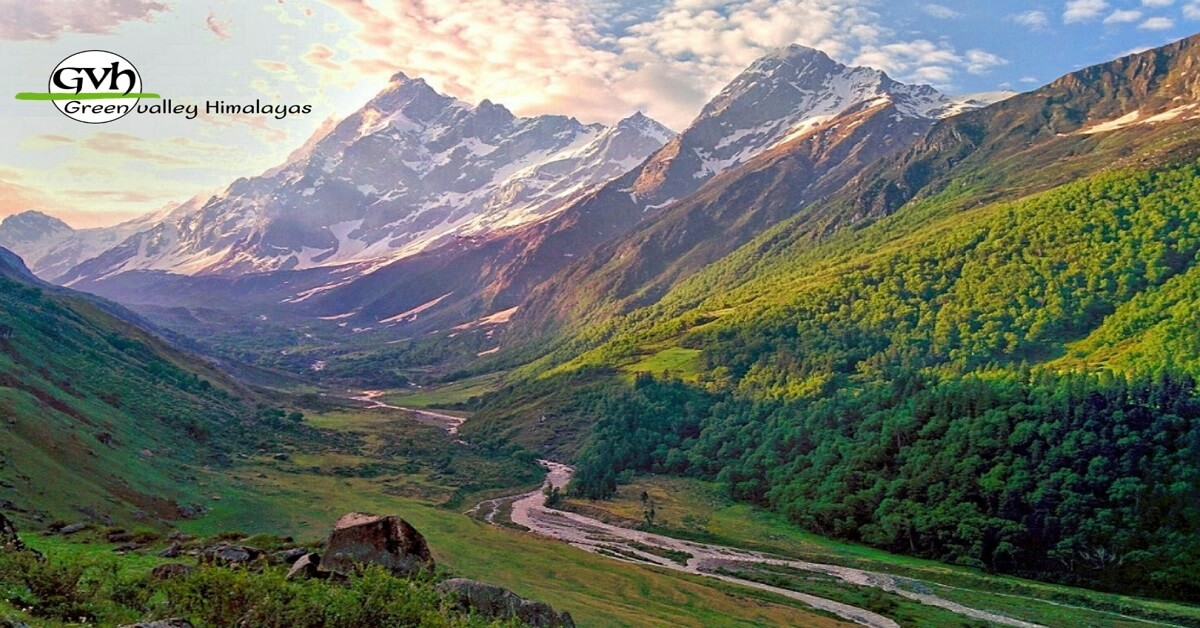

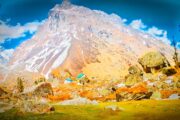
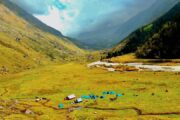

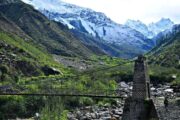
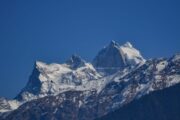
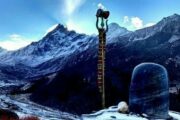
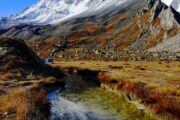

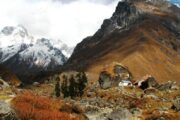
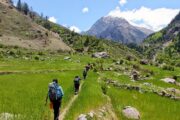
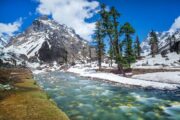
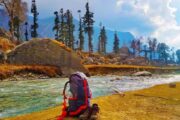
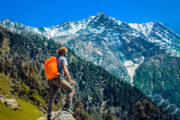
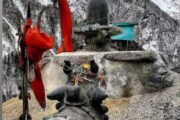
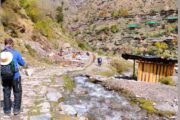
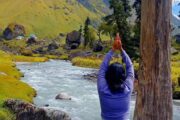

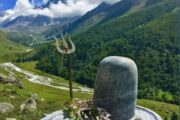




Leave a Review
Tour Reviews
My wife and I recently done har ki dun with GREEN VALLEY HIMALAYAS. It was one of the most beautiful trails i ever witnessed. I thank GVH for making this memorable. Right from the pick up until drop, I never felt the need of any thing. Each and everything was taken care of. The food was amazing through out the trek. The GVH team treated us not like some random trekkers but like family. I really appreciate this thing. The guide was very experienced and made sure that we made the best of each and every second we spent on the trail. I thank each and every member of green valley himalayas team who made our trek an unforgettable one. Its more than worth what we have paid for. Thank you.
Our guide was Mr Arjun rawat – most enthusiastic and friendly .
Felt like our own family member and helped like he meant it, not out of obligation.
Kitchen staff was very cooperative and food was mashallaha –maja hi a Gaya
didn’t expected this type of service at altitude of 3500mtr.
Thanks GVH for wonderful experience and special thanks to Arjun ji.
it goes without saying that next time -only
I recently had the pleasure of experiencing Har Ki Dun trek with Green Valley Himalayas.
From the moment I booked my hike with Green Valley Himalayas, I was impressed by their professionalism and attention to detail. The booking process was seamless, and their communication was prompt and informative. Arjun provided all the necessary information about the hike, including what to bring, the difficulty level, and any potential risks.
On the day of the hike, I was greeted by our knowledgeable guide, Satish, who immediately made everyone feel at ease. His passion for the outdoors was contagious, and his expertise ensured that we were in good hands throughout the journey. Not only did Satish lead us safely along the trail, but he also shared fascinating insights about the local flora, fauna, and history of the area, enriching the experience for everyone.
The hike itself was nothing short of spectacular. From lush forests to majestic mountain peaks and the delight of constantly trekking beside the Thamsa river, every step offered a new and awe-inspiring vista. The pace of the hike was well-balanced, allowing us to appreciate our surroundings while still feeling challenged.
To top it all off, the post-hike refreshments and meals provided were a delightful treat. Nothing beats enjoying a hot cup of tea and Samosas while basking in the afterglow of a rewarding hike.
In conclusion, I cannot recommend Green Valley Himalayas highly enough. Whether you’re a seasoned trekker or a novice adventurer, their expertly crafted hikes offer something for everyone.
Happy Hiking !!!
I had an amazing experience in this trek. it was my first trek and I did not have to worry about anything! The staff was really helpful and the trek was so beautiful in spring season
I did HAR KI DUN trek on MARCH ’23. It was my first Himalayan trek.. Experience was great.. They have skilled, professional Trek leader…. Overall a great experience with GVH
Had a great experience with GVH .It was my first trek with Arjun Bhai and I don’t regret it. The team was super awesome. Har Ki Dun , the valley of God , where you can find yourself. Every trekker should try this .
Thank you so much sagnik pal sir and hope to see u soon in next trek
Embarking on a trek to the cradle-shaped valley of gods, Har Ki Dun, where the breathtaking beauty truly tests your fortitude.
Stationed in the charming villages of Gangar and Osla, where the genuine welcome and love amplifies this fortitude.
Had a great experience with GVH again.
Not our first trek with Arjun bhai so ofcourse that makes it clear why we choose GVH and team.
Har Ki Dun has been super pleasant.
Cheers!!
I felt unsure till the last moment since this was my first solo trip ever, but i am returning with a big smile on my face and a heart fully content. Thanks to founder Mr. Arjun singh Rawat for making the entire trek absolutely comfortable for me. Will miss the diverse flora throughout our way to Har ki Dun, the smokey flavoured food cooked out of sheer love and mostly the warmth of the locals with big hearts. Not to forget the three companions i had were a joyous lot. Could not have enjoyed this much without them. Thanks again to the Green Valley Himalaya.
All work and no play make Jack a dull boy. So, if you don’t want to be Jack, choose green valley himalayas for your next travel destination. I have been done few backpack trips, tours with GVH in past. And this time I choose to explore “HAR KI DUN A VALLEY OF GOD” trek. I have always been afraid of trekking, and it was my first multi-day trek. With lot of anxiety and fear, we started our trek with our trek-leaders. I won’t say that it was a cakewalk, but I would definitely say that it was one of the best experiences of my life. We had to shift ourselves from our comfort-zones, we had to push ourselves to the limit. And this was not possible without the great company of fellow trekkers and trek-leaders. At every point, the trek leaders were available to assist us and helped whenever required. Last but not the least, the food part was amazing. Honestly, I haven’t thought of getting scrumptious 4 meals a day at such a high altitude. Overall, I can say that my trekking experience with GVH was a life-changing experience. Looking forward to have many more trips and tours with GVH!